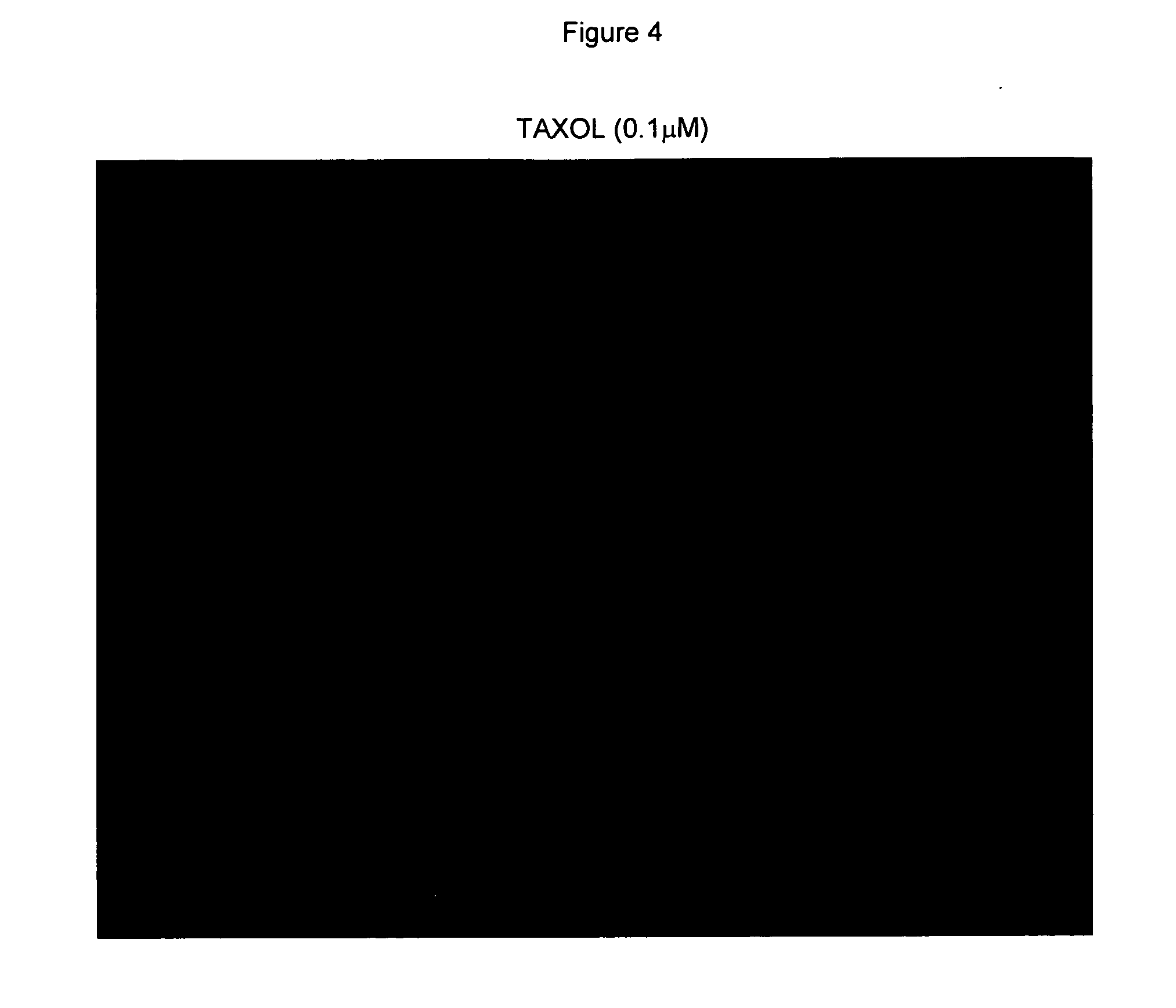Compounds for the treatment of proliferative disorders
a proliferative disorder and compound technology, applied in the field of biologically active chemical compounds, can solve the problems of limiting the use of repeat therapy, affecting cell proliferation, and inhibiting the assembly or disassembly of microtubules,
- Summary
- Abstract
- Description
- Claims
- Application Information
AI Technical Summary
Benefits of technology
Problems solved by technology
Method used
Image
Examples
specific embodiments
[0132] The invention relates to compounds and pharmaceutical compositions that are useful for inhibiting tubulin polymerization and are particularly useful in treating or preventing proliferative disorders, such as cancer. The invention also relates to compounds and pharmaceutical compositions that are useful as vascular targeting agents, particularly, in blocking, occluding, or otherwise disrupting blood flow in neovasculature.
[0133] In one embodiment, the invention relates to compounds of formula (I):
[0134] or a pharmaceutically acceptable salt, solvate, clathrate, or prodrug thereof, wherein:
[0135] one of Ra or Rb is —H and the other is an optionally substituted aryl, or an optionally substituted heteroaryl; and
[0136] R2 is an optionally substituted phenyl, an optionally substituted 2,3-dihydro-benzo[1,4]dioxinyl, an optionally substituted benzo[1,3]dioxolyl, an optionally substituted biphenyl, an optionally substituted 4-pyridinyl-phenyl, an optionally substituted quinoliny...
example 1
Synthesis of Representative Exemplary Compounds of this Invention
Compound 3: 4-(4-Methoxy-phenyl)-5-(3,4,5-trimethoxy-phenyl)-isoxazole
(1) Synthesis of 3-(4-Methoxy-phenyl)-1-(3,4,5-trimethoxy-phenyl)-propenone.
[1067]
[1068] To a stirred solution of p-anislaldehyde (1.36g, 10 mmol) and 1-(3,4,5-trimethoxy-phenyl)-ethanone (2.1 g, 10 mmol) in ethyl alcohol (EtOH) (10 mL) was added a 50% solution of NaOH in H2O (1 mL). After the reaction had proceeded to completion, volatile components were removed under reduced pressure and the residue was taken up with ethyl acetate (EtOAc) (50 mL). The EtOAc layer was washed with H2O (2×30 mL) and then dried with Na2SO4. After removal of EtOAc, the product was precipitated out from EtOH / H2O. Solid material collected by filtration and was washed by H2O (20 mL) and 95% ethyl alcohol (10 mL). The product, 3-(4-Methoxy-phenyl)-1-(3,4,5-trimethoxy-phenyl)-propenone (2.8g, 85% yield), was obtained as a yellow solid. 1H-NMR δ 3.85 (s, 3H), 3.90 (s, 3H),...
example 2
Cytotoxicity of Compounds of the Invention
[1124] Tumor cell line, MDA-435, was seeded in 96-well plates at 1×104 cells / well in DMEM medium and treated with compounds at different concentrations. Taxol was used as a positive control. The cells were incubated at 37° C. for 70 h. Viability of the cells was measured with Cell Counting Kit 8 (Dojindo, Cat # CK04). IC50 of the compounds was determined by Five-Parameter Logistic equation. As can be seen from Table 2 several compounds of the invention have IC50 values comparable to Taxol.
TABLE 2IC50compound(nM)Taxol1611322793164232646144 20045 21946 2147 47161 591162 842168 >1000
PUM
| Property | Measurement | Unit |
|---|---|---|
| temperature | aaaaa | aaaaa |
| temperature | aaaaa | aaaaa |
| molecular weight | aaaaa | aaaaa |
Abstract
Description
Claims
Application Information
 Login to View More
Login to View More - R&D
- Intellectual Property
- Life Sciences
- Materials
- Tech Scout
- Unparalleled Data Quality
- Higher Quality Content
- 60% Fewer Hallucinations
Browse by: Latest US Patents, China's latest patents, Technical Efficacy Thesaurus, Application Domain, Technology Topic, Popular Technical Reports.
© 2025 PatSnap. All rights reserved.Legal|Privacy policy|Modern Slavery Act Transparency Statement|Sitemap|About US| Contact US: help@patsnap.com



